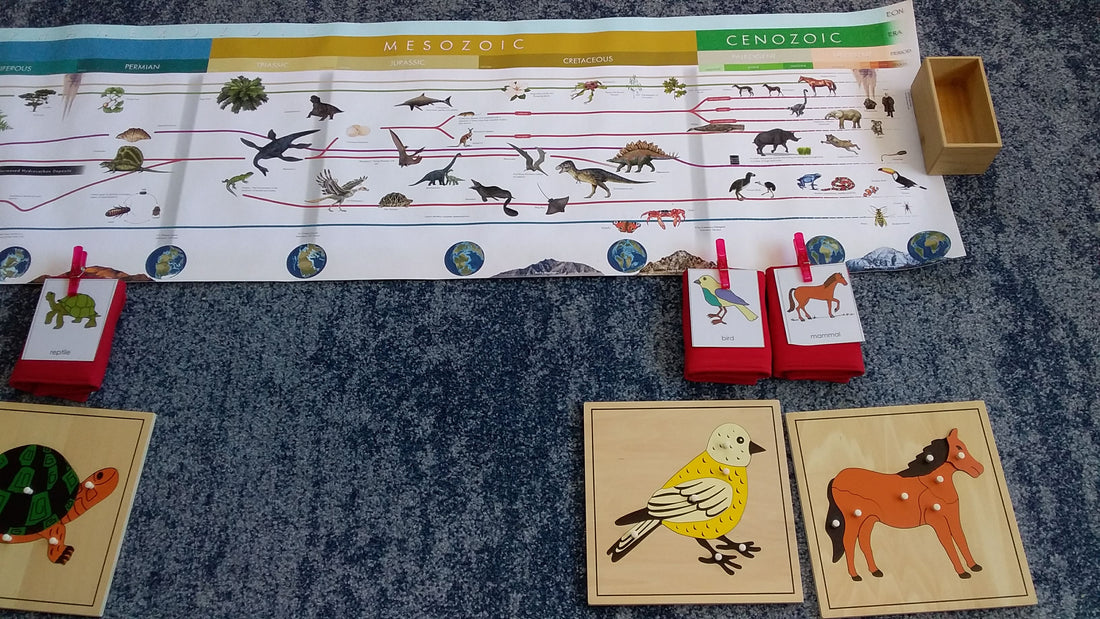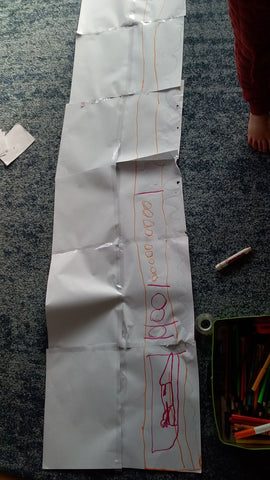
When Montessori Isn't Picture Perfect.
Share
Log onto any social media outlet (SM) and you will often see pictures of Montessori classrooms with wooden shelves, lined up equipment and a child seemingly engrossed in work after a successful lesson.
I can tell you as a trained teacher and imperfect homeschooler, that while pictures may tell a thousand words they don't tell you what happened before or after the picture.
1. What you see on SM: A perfect shelf filled with eye watering resources.
Challenge : You lay out the “perfect shelf” but the child/ren don’t engage with it.
Reality check:
-How much of the stuff in the picture on that shelf was requested by the child?
-How do you know whether after the picture the child actually engaged in the activities?
-Is my child even vaguely interested/developmentally ready for these things? What do my observations tell me?
-Is that topic appropriate for my culture?
I've done it myself before, seen a perfect shelf or activity and told myself I'm doing things wrong. Sometimes I powered through the scope and sequence so that I could say I had taught a topic. Other times I got upset at myself as my equipment didn't look as beautiful. If the child or children aren't engaging with the equipment this could be for a few reasons:
- The topic or activities do not interest them. Perhaps I haven't observed the child to see what they are interested in. Have I given enough stories or key lessons (6-12 age) to awaken interest?
- I am not allowing enough time for the child to do the activities given
- I am giving too many lessons so the child doesn't feel any point in getting something off the shelf as they know they will soon be interrupted.

The children found this bug catcher which led to a trip to the park to look for more animals and a discussion on snails and what they eat. It was a great opportunity to talk about food webs and ecosystems.
2. What you see on SM: Pretty or beautiful activities about 'Montessori stuff' the Universe, planets, continents, pumpkins, apples, cicadas and children seemingly loving every moment of it ......
Challenge: Your child/ren are interested in stuff that no one else online seems to be taking pictures of: animal snot, farts, how far can you throw mud and whether cave people had firefighters.
Reality check: It isn't the law to have a focus on pumpkins any more than it is to have one on snot. The Montessori cultural curriculum (3-6) and cosmic curriculum (6-12) have overarching aims which are tailored to the child/ren in front of you.
At the 3-6 level having some basic pieces of equipment that can be adapted to a multitude of topics is helpful. Allowing yourself and your child time to be their authentic self and be listened to and respected means that you are more likely to present something they are interested in.
At the elementary level we want to engage with the child and let them lead their learning (where cognitively and developmentally possible) this means if the child is interested in Titanic you can work with them or they can work independently on developing a research question, deciding how to present what they learn, helping them research and present the answers to the question or your child like mine might run with this interest to do a giant drawing while you have a conversation with them.
Presenting a variety of Montessori stories and key lessons and giving room for the child to soak them in so that their interest is piqued in a variety of topics is also important.

What you see on SM: All the Montessori equipment!
Challenge 3: You don’t have the resources to buy Montessori stuff and feel a sense of frustration when you see pictures online of all these things that you could be doing with your child/ren if only you had that piece of equipment.
Reality check: Maria Montessori made do with what she had around her. It wasn't until later that her traditional equipment became a commodity. There are somethings that it might be easier to buy rather than DIY but you also might be in a position where you cannot afford to buy an authentic Montessori resource and use a mainstream or other resource more readily available.
What is more important is knowing the passage of the curriculum, its over arching aims, and responding to the child with what you have. Here is an example:

4. What you see on SM: A person with picture perfect Montessori activities describing what seems like an hours long worth of activities and an engaged child.
Challenge: Your child or yourself has health, disability or neurodivergence and your lessons and activities don’t look like the ones you see.
Reality check:
- Who knows how long it took for that perfect picture to be taken?
- What do you equate good learning as? A child sitting still? Does a long lesson mean that the lesson was quality?
- Is the picture the all day reality or a brief glimpse into a brief moment in time?
- What do you think Maria Montessori said a lesson should look like?
You may be interested to know that Montessori said:
“I give very few lessons on how to give lessons, lest my suggestions – becoming stereotyped and parodied – should turn into obstacles instead of help. The directress is dealing with different personalities; and it therefore becomes more a question of how she should orient herself in what is for her a new world, rather than of any rigid or absolute rules.” Maria Montessori in Maria Montessori her Life and Work by E.M. Standing (p. 307):
If your child like mine often gets up while I am teaching and jumps on the trampoline or runs around the room to stim, cool!
If you end up giving a lesson on animal anatomy when your child spots a snail outside, cool!
You have a chronic illness and often teach from your bed or sitting in a chair, cool!
Montessori is more about our own preparation as life long learners (spiritually and academic) rather than a child sitting still with a traditional piece of equipment in a beautiful looking Montessori room.
5. What you see on SM: Endless posts about sensitive periods and Planes of Development saying that a certain age a child will do x and this is how to do y so that you don't "fail" the child
Challenge: Your child is on a seemingly different timetable to others. You keep seeing posts about planes of development and sensitive periods and feel like you are doing things wrong because your child doesn’t seem to be doing these things.
Reality check: The planes of development and sensitive periods are guides only. If you come across a post which uses strong language to railroad you into believing otherwise, unfollow that account. Seriously, no one needs that type of dogma in their life. As an example the "second plane" is said to happen when a child is 6. This doesn't mean the child wakes up on their sixth birthday and is magically on the second plane and no longer interested in first plane stuff.
Additionally many Montessorians have little experience with children with neurodivergence or disability and seem 'stuck' in Montessori text book land rather than knowing about modern neuroscience and best practice for children with intellectual, physical or learning disability. I've talked about disability and Montessori alot here, here and here.
Not all children will follow the sensitive periods or planes of development. This is fine. The sensitive period information or planes of development information may not be the best information to help a child in your care. While Montessori was a prophetic pioneer she died in 1952 and our knowledge of brains, science and best practice for children with disability has moved on considerably. We can hold onto the ethos of respecting the child and letting them lead us while using other pedagogical advances and philosophies to help the child/ren in front of us.
You may also be interested in: